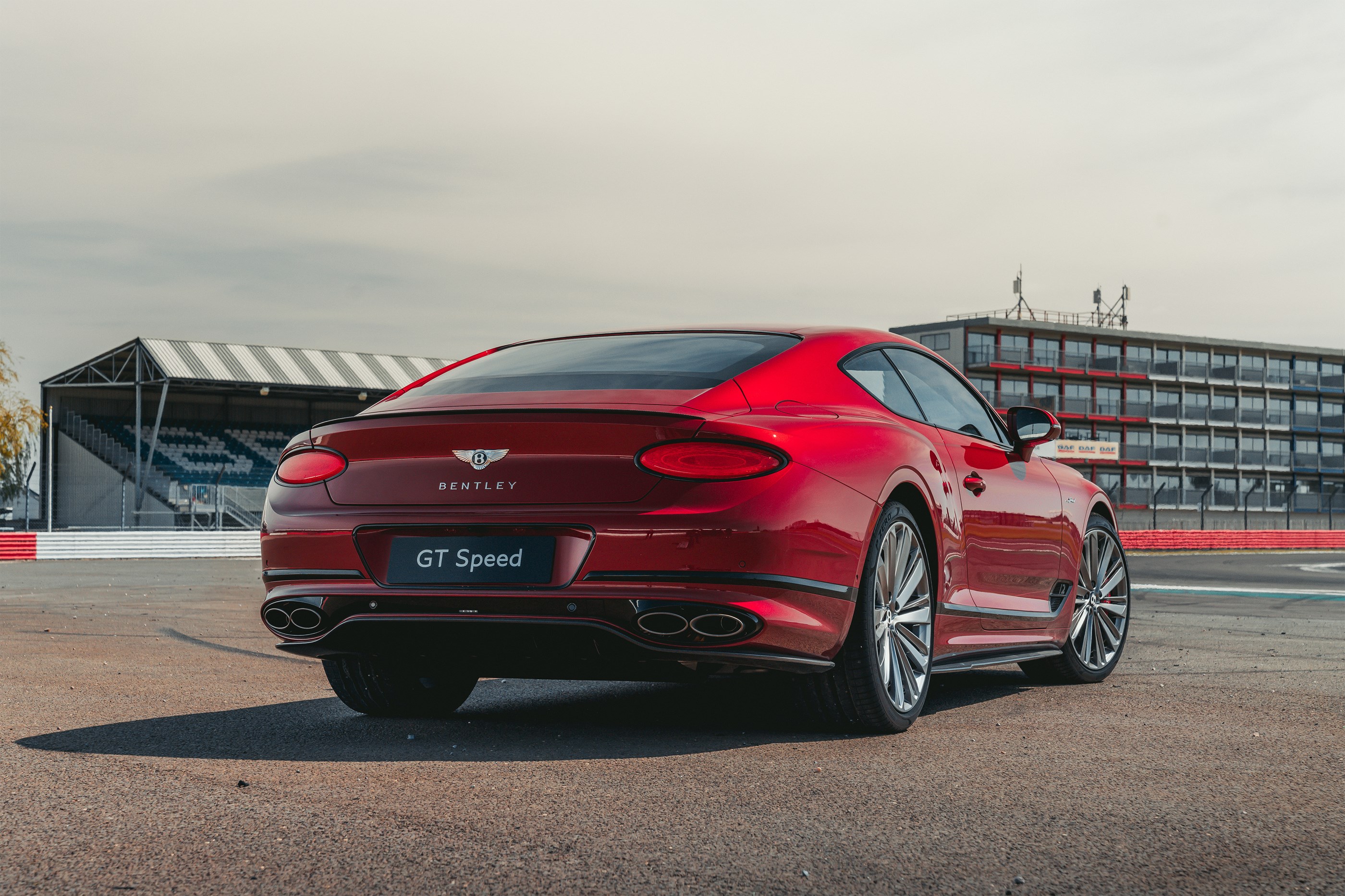When the famously gloomy British winter starts to tighten its icy grip and spirits begin to wane, a tangible reminder that the sun will shine again always provides a fillip. And I find watching David Niven in the 1958 film Bonjour Tristesse usually does the trick. The movie version of Francoise Sagan’s famous novel about a young girl called Cecile who lives with her rakish father, Raymond – effortlessly played by Niven – is based around the family villa on the Côte d’Azur, from where Raymond cruises the corniche in a silver Bentley S1 Continental drophead while looking tanned, relaxed and unspeakably sophisticated.
Since 1952, when the first Continental was introduced, Bentley’s sporting grand tourers have more or less been regarded as the default choice of carriage for the discerning gentleman, successfully conjuring an image of romantic, long-distance drives between well-appointed homes in glamorous locations.
The name, after all, says everything. ‘Continental’ speaks of azure seas and dazzling sun, of hot nights and chirping cicadas – images which are only strengthened by the prefix ‘Bentley’.
The original Continental, based on the R-Type saloon, was made in just 208 examples and is now the most collectable of all post-war Bentleys, with the best commanding more than £1m. The name was applied to the more ubiquitous S1, S2 and S3 models produced from 1955 until the mid ’60s, after which no more Continentals were made until the model’s re-introduction in 1984.

If there’s another car that can go as quickly in equal comfort, I’ve yet to drive it.
Its most successful incarnation, however, came in 2003 with the launch of the Continental GT two-door coupe which wowed the world with its six-litre, W12, twin-turbo engine that produced 552 horsepower. Distributed to all four wheels, it proved sufficient to give the original model to a top speed of 190 miles per hour.
In the intervening 18 years, the Continental GT has become the best-selling Bentley of all time with more than 80,000 sold and the current (third-generation) model is widely regarded as the finest high-performance luxury coupe on the market.
Along the way, the 21st-century ‘Conti’ has been made available in a series of versions designed to make the most of its sporting nature through enhanced performance and edgier dynamics, with 2007 seeing the arrival of a more powerful model called the ‘GT Speed’.
It was followed a couple of years later with even more extreme ‘Supersports’ and limited edition ‘GT-R’ versions that were so performance-orientated that they could be specified with lightweight race seats in the front and the rears substituted for a carbon-fibre brace.
But it’s the ‘Speed’ versions that have always offered the best combination of luxury, increased sporting character and one-upmanship over the regular Continental GT. Now the third generation has finally got the treatment with the arrival of an all-new GT Speed that is said to be ‘the most dynamic road car in Bentley’s 101 year history’.
It is available as a coupe (from £209,900) or convertible (from £230,900), both being powered by an uprated version of the six-litre W12 that produces 650bhp and delivers a gut-wrenching 900 Newton metres of torque, resulting in a standstill to 60mph time of just 3.5 seconds and a top speed of 208 mph.
As everything in that sentence implies, the new GT Speed might not be the ideal car in which to head north to Glasgow for next months COP26 – in fact, with a thirst for fuel that can easily see it consume a gallon every 15 miles when driven with enthusiasm, the car rather makes a mockery of Bentley’s recent claim that emissions from its Pym’s Lane plant in Crewe fell ‘99.5 per cent’ between 2010 and 2020.

But with plans in place for the marque to go ‘all electric’ in little more than eight years, the GT Speed is bound to appeal to Flying B fans who want to make the most of their favourite marque in all its traditional, fossil fuel burning glory while they still have the chance.
And to make sure everyone knows they’re shamelessly driving the most souped-up Continental available, the GT Speed wears a dark-tinted front grille and radiator matrix, deeper ‘sports’ sills, chrome ‘Speed’ badges and special-pattern, 22-inch diameter wheels. There are also seven roof colour options for the convertible (including ‘tweed-look’) and eight options for the lining.
The interior, meanwhile, features two-tone leather and Alcantara seats with diamond-quilted uphlstery and ‘Speed’ embroidered head rests as standard.
As with any Bentley, however, the GT Speed can be fully personalised – in this case, through a choice of 15 ‘main’ and 11 ‘secondary hide colours, a centre console finished in engine turned aluminium and a range of seven different veneers (four of which are no-cost options).
The car is also fitted with Bentley’s nifty rotating display instrument panel which offers the options of a touchscreen display, a trio of analogue dials or a blank veneer.
But it’s the engineering changes beneath the skin that make the GT Speed noticeably more rewarding to drive than the already highly accomplished standard car on which it is based – the most significant of these being the ‘active’ rear-wheel steering that enhances the car’s agility during sudden changes of direction.
There’s a race car inspired electronic limited-slip differential too, and, at the front, the biggest disc brakes ever seen on a production car – they measure 420mm in diameter and are grabbed by calipers equipped with no fewer than 10 pistons.
To prove the worth of the car’s high-tech engineering, part of the launch drive included being invited to blast the car around Sicily’s Comiso aerodrome, which previously served as an air base for the Luftwaffe, USAF and RAF during WWII, a commercial runway for Alitalia during the 1950s and, during the 1980s, as the largest NATO site in southern Europe.
Last used for the Rainbow Mission that housed 5,000 Kosovar refugees during the Bosnian war, Comiso – effectively a small town – has been abandoned for the past two decades and is now just a vast and sprawling collection of derelict buildings connected by a network of cracked and weeded roads.
Driving around Comiso at a suitably enthusiastic pace felt akin to being within a video game, not least since the car seemed capable of negotiating the place at implausible speed. I would say it’s the leader in its class – but, truth be told, it’s in a class of its own in terms of the way it delivers enhanced performance over the regular Continental without sacrificing any of its cosseting comforts. If there’s another car that can go as quickly in equal comfort, I’ve yet to drive it.
Mainly, however, Comso’s dereliction served as a reminder of several ended eras – highlighting the fact that the current era of shamelessly brawny, thrillingly fast, angrily-growling and highly capable petrol-engined supercars is rapidly coming to a close as electrification looms.
So if you’re still up for a last hurrah in luxurious comfort, best make your move. The GT Speed won’t be around forever – but at least you’ll be able to tell your grandchildren what truly great GT cars used to be like.







Comments